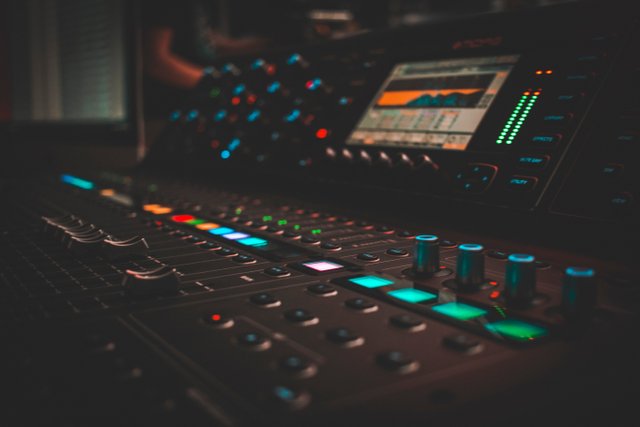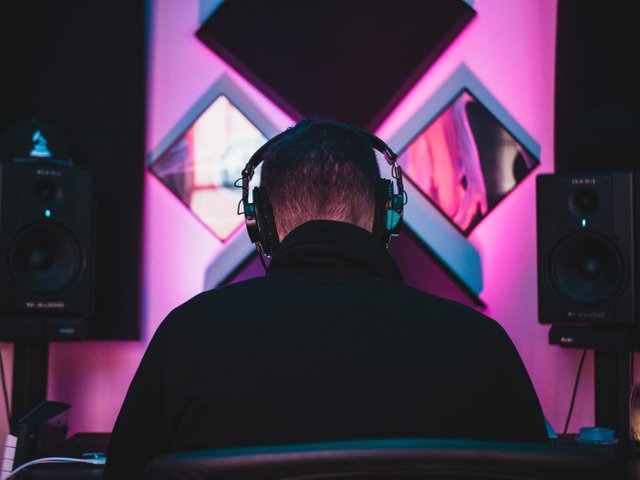Recording Vocals: Some Technical Insights

source
Although the task of recording vocals is basically simple, you will still be very surprised that a greater percentage of people who deal with sound, directly or indirectly, still assume and perceive this task to be extremely complicated and daunting; and sometimes this wrong assumption only pushes them into a place where they constantly believe that they can only efficiently perform well with expensive, pro-level gears and gadgets. Usually they end up spending too much an amount, that could have been used for something else.
I once read from a book that the very first necessity for recording an awesome vocal is an awesome vocalist. Having a vocalist who can actually perform well is far more important than having a one thousand dollar microphone. With just a little reasoning, I have come to understand that this is only true. Not many listeners can tell the kind of microphone you used, they don't care about that. What they care about is a great vocal performance that will capture their hearts and souls. To be clear, I don't have anything against expensive microphones and gears as I myself would invest in the right ones when the time comes. As a matter of fact, I love and envy expensive audio gears.
After getting an awesome vocalist or working on your vocal techniques the next things to consider in order to have a great sounding recorded vocal are microphone positioning, compression, equalization (EQ) and room acoustics. Microphone polar patterns, sensitivity and null points of your microphone should also be studied in order to get the best from your microphone(s). Reverb types are also important as a suitable reverb will very much be useful in adding realism and space to the performance. Pop shields are also very necessary as it is efficient in taming excessive sibilances and pops while recording.
Vocal takes
In cases where the vocalist is also the recording engineer or producer, it is always very important to memorize the lyrics or at least some part of it. I personally perform better if I am not constantly reading my lyric from a sheet. Memorization can really enhance performances because it allows a more natural flow. In cases where the vocalist is not the recording engineer or producer, it will be helpful if the producer has a copy of the lyric sheet so he can easily make corrections and also target words that will potentially be an issue to the vocalist. Some producers will prefer recording one complete take with all the mistakes and later correct them by asking the vocalist to retake the faulty parts, while other producers will record several complete takes and then merge the best sections from each take. Another trick many producers use is to ask the vocalist to record short sections of the performance, maybe four bar each until it’s done. It doesn't really matter what method you use but what matters is having a good sounding recording at the end of it.
Vocal monitoring
Vocal monitoring is mostly done on headphones and two types of headphones are commonly used. Closed-back and Open-back are the most commonly used types of headphones for vocal monitoring. Closed-back is less likely to have spillage issues but some vocalist do not feel very comfortable using them because they feel the enclosure is distracting and thus, they normally find it hard to sing in tune. It is not uncommon to see singers take one ear off and let the other one on during studio sessions. I personally cannot perform well using a closed-back headphone, I always have to take one ear off. It is also very important that the audio engineer mutes the ear that is not being used to avoid spillage issues which were the very reasons a closed-back was chosen in the first place. This muting can be achieved by using pan-control. Open-back headphones are much more comfortable to work with and it gives a more natural feel during performances but it also comes with a great price which is “spillage”. This may not seem very serious until you get to a portion that you decide to solo the track and it gets really dirty if a click track was also on.

source
Vocal microphones
In live performances, the most appropriate type of microphones are dynamic microphones. But in studio recording, this is not always the case. Most professional recording studios will opt for a microphone with very high sensitivity and really wide frequency response, reaching up to 20kHz or more. Dynamic microphones will not perform very well above 16kHz and are less sensitive than condenser or capacitor microphones. I should note that some musicians in genres like Rock will opt for a dynamic microphone because of the fatness of sound. The wide frequency response of a capacitor microphone also comes with a price and that is “sibilances”. The capacitor mic can overemphasize the whistling sound that comes with the /t/ and /s/ sounds in a performers voice. The best treatment for this is always to attenuate those frequencies with a de-lesser, but sometimes manually reducing the gain of those frequencies can also help.
No single microphone is right for all vocalists, a singer with a bright voice may sound really harsh using a mic with a presence peak but the same mic used on a singer with a very soft and mellow voice will sound incredibly good. Some sound engineers will always try to correct this problem with an EQ but this is not always right as it is best to record vocals with little or less EQ. Using the right microphone remains the best option. It is advised that if you have to record a lot of vocalists with only one microphone, you should opt for the microphone that doesn't have too much character as this kind will likely work on a wide range of vocal styles. An EQ can later be used to fine-tune the voice to your taste.
Microphone polar patterns for vocals
Cardioid microphones are always the best choice for stage or live performance because they can properly reject off-axis sounds. In the studio, vocals are recorded differently. Vocals are usually recorded as separate overdubs which means the singer usually monitors the backing mix with a headphone and using a cardioid mic, in this case, wouldn't be so great. It is also a good idea to use a directional mic in order to minimize the effect of room acoustics on the vocal performance, except the room is quite "dead" or the room acoustic is specially designed to give you the sound you want. An omni-directional mic will be your best option if the acoustics of your room enhances the quality of your sound, as an omni-mic will capture the entire character of the room alongside the vocals. A microphone should be mounted on a solid stand and a shock mount should always be employed.
Compression
Compression is needed to keep the vocal levels smooth and even. Compression ratios are also worthy of study. A singer with a very wide dynamic range may require a “hard ratio” of about 5:1 in order to keep the peaks under control. It is always advisable to apply less compression while recording because more can be added during the mix stage. Too much compression should also be avoided because compression will bring out all the present sibilances and noises in a recording. It is essential to remember that less is more. The most important thing is an awesome vocal rendition.
Unfortunately, I have to stop here. I could go on and on but I really hope the little I have written so far, helps someone. I am on a journey to becoming a professional recording artist and record producer and I am learning every day. Inputs, tips, and suggestions from you will also be very much accepted. You can listen to my sounds on choon by clicking the link on my bio. Also, I share again with you my most recent release which is also available on choon. Below is an embedded SoundCloud link for ease of listening.
I made a post about the song two weeks ago., offering some technical insights.
Reference: The sound on sound book of recording and production techniques
Sublime experience :)
Very nice one.
But you forgot something.
Your take must be clean, no amount of processing can save a take that has heavy background noise in it or undesirable ambiance.
For me, the first step to an awesome song is having a sufficiently padded and quiet room.
A muddy take, means a muddy mix, meams a bad song.
You are very right there. Thank you for reminding me and also stopping by. It is a pleasure. Much love from this end.
This post was shared in the Curation Collective Discord community for curators, and upvoted and resteemed by the @c-squared community account after manual review.
Heey this is pretty didactic! I didn't know this process was like this, and your explanation was really good. Nice post!
this post will be proposed to be curated by the @celfmagazine project